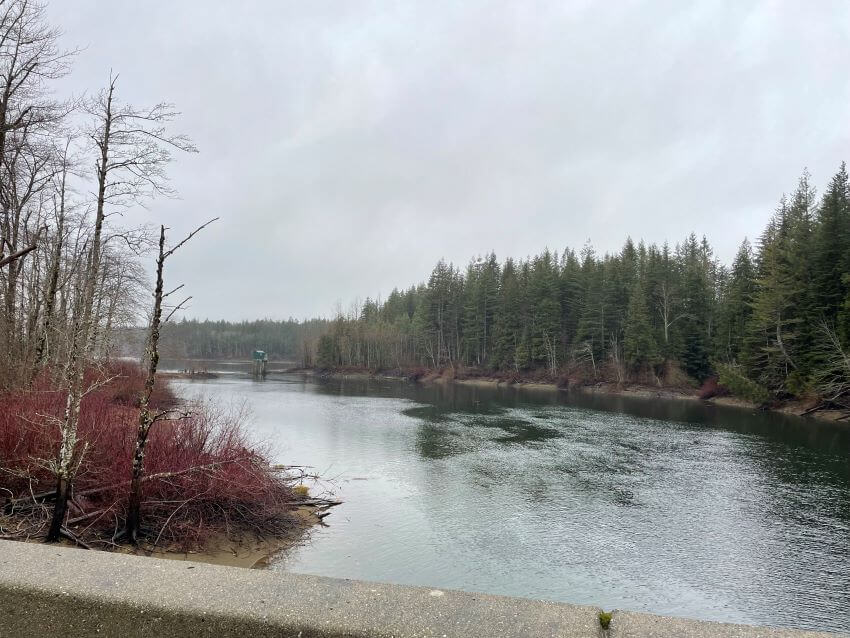 A look at the drinking water reservoir in the Cedar River Watershed (Chester Morse Lake) on December 7, 2023 after last week’s rainstorm.
A look at the drinking water reservoir in the Cedar River Watershed (Chester Morse Lake) on December 7, 2023 after last week’s rainstorm. 1.5 Million Customers No Longer Asked to Use Less Water
In 48 hours, at the height of last week’s atmospheric river, a whopping 4.4 billion gallons of water dumped over Seattle’s regional drinking water reservoirs in the Cascade Mountains.
“That’s a lot of water,” said Julie Crittenden, Water Planning and Program Management division director at Seattle Public Utilities (SPU).
And it’s just what the region needed to bounce back from an unusually dry summer and fall that led SPU to move into the Voluntary Stage of their Water Shortage Contingency Plan (WSCP) on September 21 and begin asking its 1.5 million customers to voluntarily reduce their water use.

Thanks to the December rainstorm and rainfall in November, the Cedar River and the Tolt River reservoirs combined are now at normal water storage levels and SPU can deactivate the WSCP.
This is good news. It means the region is no longer facing a potential water shortage and customers can return to normal water use.
For nearly three months, Seattle’s residents, businesses and the 25 neighboring cities and water utilities that share Seattle’s water source did their part to stretch the water supply by reducing their water use while we waited for our reservoirs to be replenished.

“Our customers answered the call to voluntarily reduce their water use, and we can’t thank them enough,” said SPU General Manager Andrew Lee.
“It’s not always easy or convenient to change one’s routine when it comes to lawn watering, showering, or addressing toilet leaks. Our customers took our tips to heart and reduced their water use to help achieve our goal,” continued Lee.”
Water consumption for the region was at 149 million gallons per day (mgd) on September 18. By December 4, it had dropped to 104 mgd – just shy of the 100 mgd goal that SPU set for the region.
“Customers definitely did their part and so did SPU staff,” said Crittenden.
“From our water resource managers and water conservation staff to our customer outreach specialists, public information officers, and many others, we worked to ensure that the region’s most precious resource was managed well for both people and fish during this critical time.”
“I thank the entire regional community for their commitment to water stewardship.”
Read our At Your Service blog for previous updates about the region’s water supply story:
- 1.5 Million People Asked to Use Less Water to Stretch Region’s Water Supply (September 21)
- Has the Rain Helped the Region’s Water Supply? Are Customers Using Less Water? (October 2)
- Seattle Residents and Businesses Keep Taking Water Savings to the Next Level (October 10)
- Reservoir Levels and Rainfall – Two Key Factors in Seattle’s Continued Ask to Reduce Water Use (October 16)
- Keep it Up! Water Usage Is Dropping and Here Are More Ways to Save Water (October 23)
- Water for People and Fish. Each Gallon Saved Keeps More Water in Our Rivers and Lakes for Fish and Wildlife (October 30)
- Customers Share Water-Saving Tips, Plus Alex Chen Talks Water Supply and Climate Change (November 6)
- Seattle-Area Sees 44-Million-Gallon-Per-Day Drop in Water Usage – Inching Closer to The Regional Goal (November 13)
- Reservoir Levels Up, Usage Down as Water Supply Conditions Improve Over Last 30 Days (November 28)
- Latest storms help reservoir levels get closer to normal while water use hovers above 100 mgd (December 4)